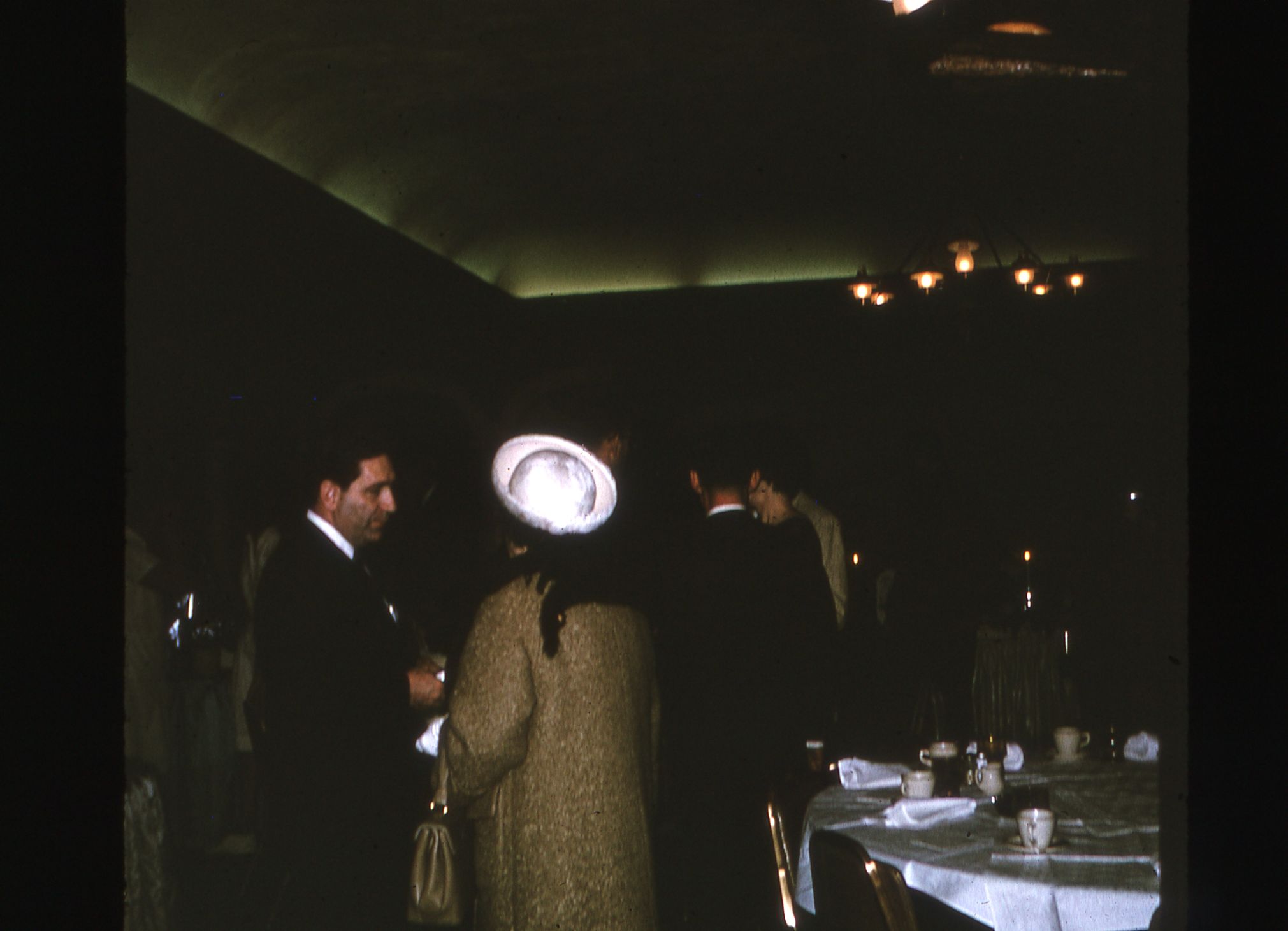One of my favorite movies growing up was RoboCop, Paul Verhoeven’s 1987 dystopian classic.
The movie, which was probably way too violent for a 10-year-old, depicts a fictional future in which Detroit is ravaged by violent crime and on the verge of social collapse. The police are virtually powerless against the criminals, who are too numerous and better armed. Led by a particularly nasty crime lord named Clarence Boddicker (Kurtwood Smith), the crooks prey on helpless citizens.
In one memorable scene, a member of Boddicker’s gang rolls up to a Shell station where a bespectacled clerk is doing geometry.
“Give me all your money, bookworm, before I blow your brains out,” the gang member says, tapping his automatic weapon against the plexiglass.
The clerk quickly puts down his compass and turns over the cash. Moments later, after filling up his motorcycle, the crook again approaches the clerk and appears poised to shoot. That’s when RoboCop shows up.
“Drop it,” he orders, raising his three-round burst pistol. “Dead or alive, you’re coming with me.”
The scene has always stuck with me for some reason. Maybe it was the cruelty of the sawed-off gang member (“You a college boy or something?”). Maybe it was the patheticness of the mute clerk, who seemed so weak and helpless. But mostly, I think, it was the feeling of utter lawlessness the scene evoked.
Lawlessness is an overarching theme in RoboCop. The city is out of control. Citizens can’t protect themselves, and the police aren’t much help. We see this early on when Murphy, the hero of the movie, tries to stop Boddicker’s gang and is blown to pieces (literally). What remains of Murphy’s body is reconstructed into a law-enforcing cyborg — RoboCop, half machine, half man — who is going to take on not just Boddicker and his gang but Dick Jones (Ronny Cox), the corporate villain who heads up OCP, the corporation that created him.
RoboCop is a good enough flick for a kid, but the older I got, the more absurd the film felt. The villains are cartoonish, and the idea of a society imperiled by helpless citizens and weak police forces always seemed detached from reality.
At least it did.
Toronto, Police, and Rotten Incentives
A couple weeks ago news broke that Toronto police, facing a crime wave, have offered new instructions to citizens: leave your keys at the front door for criminals.
“To prevent the possibility of being attacked in your home, leave your [key] fobs at your front door,” Const. Marco Ricciardi is heard telling citizens and reporters at a recent community meeting.
When I first saw these claims on social media, I thought it must be fake news. But Toronto police confirmed it in a statement.
“Police are concerned about an escalation in violence, where all sorts of weapons and firearms are being used to steal vehicles, and that includes during home invasions,” the statement reads.
Police have a point about surging crime. Car thefts are up 25 percent over the last year in Toronto, news agencies report, and many of the crimes involve crooks breaking into homes and snagging car keys.
When you watch the footage of masked attackers kicking in doors — many of whom are armed, according to police — one can see a certain logic to the guidelines. If the invaders find the keys quickly, it reduces the likelihood of an encounter between a homeowner and a potentially armed group of criminals.
Still, there are obvious problems. Put aside for now that your car (and everything in it) is being stolen. There’s also the problem of incentives.
We talk a lot about incentives (and disincentives) in economics. They are the drivers of human action. We make countless decisions every day, consciously and unconsciously, based on incentive structures around us. You needn’t be an economist to appreciate their power.
“Incentive structures work, so you have to be very careful of what you incent people to do,” Steve Jobs told author Brent Schendler many years ago, “because various incentive structures create all sorts of consequences that you can’t anticipate.”
The late Charlie Munger once said that if you showed him the incentive, he’d show you the result. And though incentives can get rather complicated, at their most basic level they are rather simple. A good incentive structure rewards good behavior and punishes bad.
Anyone who has trained a dog or raised a child understands this. You don’t give a dog a treat after he poops on your carpet; you give him a treat after he sits (or does whatever task you want him to do). You might reward a child with ice cream for getting a good grade on a spelling test, but not for throwing a tantrum at the grocery store.
Which brings me back to Toronto. By telling residents to leave their key fobs at the front door for criminals, police are essentially incentivizing burglary and theft. They are making it easier, not harder, to steal vehicles, diminishing the time it takes to commit the crime, thus lowering the risk involved.
One needn’t have a Ph.D in economics to understand this is likely to have an obvious adverse effect: an increase in car theft and home invasions in the city.
‘The Inviolable Domicile’
All of this is eerily reminiscent of RoboCop.
When you watch the Toronto police video footage of criminals kicking down doors of homeowners, and you combine that with police officers telling homeowners simply to give their keys to car-jackers, I’m reminded of the lawlessness of RoboCop and the mute gas station attendant who was helpless against it.
There’s something dystopian in normalizing this kind of violence, and in some ways it is darker and more depressing than RoboCop.
The police in Verhoeven’s film may have been ineffective, but at least they were trying to fight back. This is in contrast to the Toronto Police Service, whose lengthy list of home invasion tips was conspicuously absent an obvious response: homeowners exercising their right of self-defense.
This is strange, because the inviolability of the home is a legal concept that stretches back to before the birth of Christ.
“What is there more holy,” asked Cicero, “than the house of each individual citizen? Here is his altar, here is his hearth, here are his household gods; here all his sacred rights, all his religious ceremonies, are preserved.”
What we sometimes today refer to as the “castle doctrine” existed in the days of the Roman Republic.
“The domicile was seen as inviolable,” the French historian Numa Denis Fustel de Coulanges wrote in his celebrated history The Ancient City. “According to a Roman tradition, the domestic god repulsed the robber, and kept off the enemy.”
The Not-So-Inviolable Domicile
The legal right to protect one’s home, with defensive violence if necessary, is a concept more than 2,000 years old in the Western tradition. And it’s a legal precept you’ll find not just in the US but in Canadian legal charters.
“A person’s home is inviolable,” Sec. 7 of Quebec’s Charter of Human Rights and Freedoms explicitly states.
Apparently, not everyone sees the home as inviolable, even against violent intruders.
“You can’t use a gun for self-protection in Canada,” Prime Minister Justin Trudeau flatly stated in 2022. “It’s not a right that you have.”
This isn’t true, however. The Canadian government might not allow you to cite self-defense as a reason to obtain a firearm, but Canadians do have the right to defend themselves and their property, so long as the actions are deemed “defensive” and “reasonable.”
This right was recently tested when a 22-year-old Ontario man, Ali Mian, opened fire on a group of men who broke into his home and attacked his mother. One intruder was killed, and Mian was charged with second-degree murder. The charge was later withdrawn, however, apparently after prosecutors realized the shooting was a textbook case of self-defense.
Canada’s demonstrated legal protections for self-defense only make Trudeau’s callous dismissal of them all the more peculiar.
After all, the right to self-defense has a broad popular appeal and a rich intellectual tradition. It is present in the Bible and defended by thinkers as diverse as Confucius, Mencius, and Malcom X, who bluntly stated, “I am not against using violence in self-defense.”
The philosopher John Locke carved out perhaps the most robust defense of the right of self-protection in his Second Treatise on Civil Government:
I should have a right to destroy that which threatens me with destruction: for, by the fundamental law of nature, man being to be preserved as much as possible, when all cannot be preserved, the safety of the innocent is to be preferred: and one may destroy a man who makes war upon him.
Despite the rich tradition and popular appeal of the right of self-defense, Trudeau and many others remain hostile to it, which is no doubt why Toronto police declined to recommend defensive force as a deterrent to home intrusion.
This hostility likely stems from a number of sources, but in Trudeau’s case it is perhaps best explained by his disdain for individual rights, particularly property rights and the right to bear arms.
Critics of self-defense and gun rights have noted that for many, “the gun is the premier mark of individual sovereignty.” Yet many progressives see individual rights and individual sovereignty as a threat to the collective good; so the rights of individuals must be curbed and subordinated, as Trudeau has done with recent gun control legislation.
Unfortunately, placing the “collective good” above individual rights is a path toward dystopia and dysfunction. Individual rights — including the right to protect oneself and one’s home, and also to bear arms — are the wellspring of freedom. And freedom is the fountain of prosperity, civilization, and progress.
Departing from this tradition is how you end up with a society where individuals are unable to legally protect their own homes from violent criminals. Many will argue that this is why we have police, but the obvious problem is that police cannot protect everyone, certainly not with the immediacy that is needed in the midst of a burglary.
Unlike the citizens in RoboCop, Canadians can’t count on a cybernetic policeman to defend them from violent actors.
Even worse, they’re being discouraged from protecting themselves and their homes by a government so hostile to individual rights and self-defense that it’s advising them simply to turn their property over to their attackers.
It’s not hard to see where this will go if Canada continues down this path.
This article originally appeared in AIER’s Daily Economy.
Source: Why Toronto Cops Are Advising Homeowners: Just Give Criminals Your Car Keys – FEE























